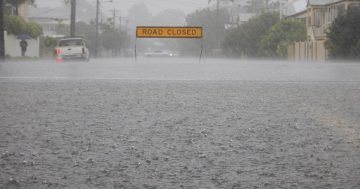
Australia can look forward to more extreme weather events, say CSIRO and the Bureau of Meteorology. Photo: Sally Hopman.
Longer fire seasons, more heatwaves, heavier rainfall and rising seas levels are now the norm for Australia and look set to increase, according to the latest State of the Climate report.
CSIRO and the Bureau of Meteorology (BoM), who prepare the “health check” every two years, released the State of the Climate Report 2024 on Thursday (31 October).
The report draws on the latest national and international climate research, monitoring and projection information to describe changes and long-term trends in Australia’s climate.
The report’s authors describe the document as a “synthesis of the science that underpins our understanding” of Australia’s climate.
It is intended to inform economic, environmental and social decision-making by governments, industries and communities.
The latest report shows the amount of greenhouse gases in the atmosphere continues to increase, contributing to climate change, with 2023 the warmest year on record globally.
And while Australia’s overall emissions have declined since 2005, it’s projected to see continued warming over the coming decades with more extremely hot days and fewer extremely cool days.
The rate of emissions decline will need to accelerate from now to meet Australia’s 2030 emissions targets, the report states.
Scientists found the oceans around Australia were continuing to warm with increases in carbon dioxide in the atmosphere leading to more acidic oceans, particularly to the south.
CSIRO research manager Jaci Brown said ocean warming had contributed to longer and more frequent marine heatwaves with the highest average sea surface temperature on record occurring in 2022.
“Increases in temperature have contributed to significant impacts on marine habitats, species and ecosystem health, such as the most recent mass coral bleaching event on the Great Barrier Reef this year,” Dr Brown said.
“Rising sea levels around Australia are increasing the risk of inundation and damage to coastal infrastructure and communities. Global mean sea level is increasing, having risen by around 22 centimetres since 1900. Half of this rise has occurred since 1970.
“The rates of sea level rise vary across the Australian region, with the largest increases in the north and southeast of the Australian continent.”
The report describes the shift towards drier conditions from April to October across the southwest and southeast, and reduced rainfall in southwest Australia now seems to be a permanent feature of the climate.
The BoM’s climate services manager Karl Braganza said lower rainfall in the cooler months was leading to lower average streamflow in those regions.
He said that could impact soil moisture and water storage levels and increase the risk of drought.
“Droughts this century have been significantly hotter than those in the past,” Dr Braganza said.
“However, when heavy rainfall events occur, they are becoming more intense with an increase of around 10 per cent or more in some regions.
“The largest increases are in the north of the country with seven of the 10 wettest wet seasons since 1998 occurring in northern Australia.”
Dr Braganza also noted Australia was continuing to warm – eight of the nine warmest years on record have occurred since 2013.
“This warming has led to an increase in extreme fire weather and longer fire seasons across large parts of the country,” he said.
Key points from the report show:
- Australia’s climate has warmed by an average of 1.51 degrees Celsius since national records began in 1910.
- Sea surface temperatures have increased by an average of 1.08C since 1900.
- The warming has led to an increase in the frequency of extreme heat events over land and in the oceans.
- A decrease of about 16 per cent in April to October rainfall in the southwest of Australia since 1970. Across the same region, May to July rainfall has seen the largest reduction – by about 20 per cent since 1970.
- A decrease of about 9 per cent in April to October rainfall in the southeast of Australia since 1994.
- Heavy short-term rainfall events are becoming more intense.
- A decrease in streamflow at most gauges across Australia since 1970.
- An increase in rainfall and streamflow across parts of northern Australia since the 1970s.
- An increase in extreme fire weather and a longer fire season across large parts of the country since the 1950s.
- A decrease in the number of tropical cyclones observed in the Australian region since at least 1982.
- Snow depth, snow cover and number of snow days have decreased in alpine regions since the late 1950s.
- Oceans around Australia are becoming more acidic with changes happening faster in recent decades.
- Sea levels are rising around Australia, including more frequent extreme high levels that increase the risk of inundation and damage to coastal infrastructure and communities.
“In addition to extreme heat, many other climate hazards are expected to be more significant at 2C or higher global warming levels than at 1.5C or at present-day levels,” the report states.
“These include increased coastal inundation as a result of rising sea levels, increased heavy precipitation, increases in human health risks, water stress, and impacts on biodiversity and ecosystems on land and in the oceans.”
Original Article published by Chris Johnson on Riotact.













